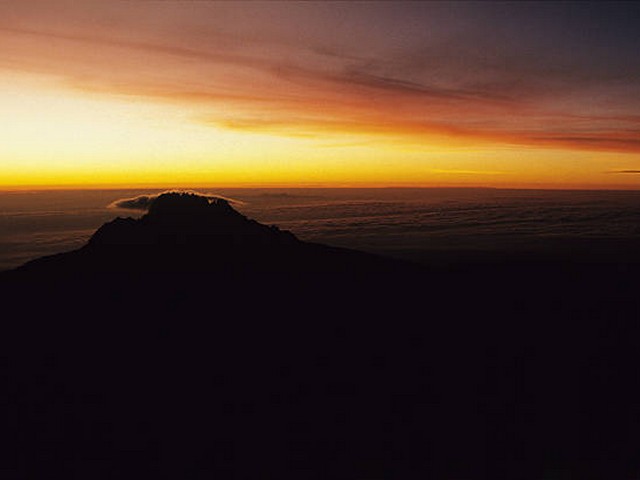Educational Guides On Kilimanjaro’s Volcanic Formation
Welcome to an awe-inspiring journey through the geological marvel that is Mount Kilimanjaro! As the highest peak in Africa and one of the most sought-after trekking destinations in the world, Kilimanjaro is not just a mountain; it’s a monumental testament to Earth’s volcanic activity. At Kilimanjaro Centre for Trekking and Ecotourism (KCTE), we’re excited to guide you through the fascinating volcanic formation of this majestic mountain. Whether you’re a geology enthusiast, a student, or simply curious about the natural world, this guide aims to enlighten and inspire you. Let’s explore the fiery origins and dynamic processes that sculpted Africa’s rooftop!
The Geology of Kilimanjaro: Unveiling Earth’s Secrets
Mount Kilimanjaro stands as a stratovolcano, composed of layer upon layer of hardened lava, volcanic ash, and tephra. Its creation story begins over a million years ago in the Pleistocene era, a testament to the enduring processes beneath our feet. The mountain features three primary volcanic cones: Kibo, Mawenzi, and Shira. Of these, Kibo is the youngest yet stands as the highest point, crowned with the iconic Uhuru Peak.
Kibo: The Sleeping Giant
At 5,895 meters (19,341 feet), Uhuru Peak on Kibo cone represents the pinnacle of Kilimanjaro’s volcanic activity. Though currently dormant, Kibo’s last eruption occurred around 200,000 years ago. Its caldera, a large, crater-like cavity, signifies the power of its explosive past. Inside, the Reusch Crater and the smaller Ash Pit remind us of the mountain’s fiery lineage.
Mawenzi and Shira: Witnesses to the Past
To the east, Mawenzi’s rugged peaks tell tales of severe erosion and ancient activity, with its last volcanic activity dating back approximately 448,000 years. Shira, the oldest cone, is mostly collapsed, a caldera that evolved through centuries of erosion and volcanic inactivity, setting the stage for Shira Plateau’s breathtaking landscapes.
Climbing Kilimanjaro: A Geological Expedition
Trekking up Kilimanjaro provides more than just physical challenges and picturesque views; it offers a front-row seat to geology in action. Each of the mountain’s ecological zones showcases different aspects of its volcanic nature, from lush montane forests to the alpine desert’s stark beauty.
Traverse Through Time
As you ascend, imagine walking backwards in time. The lower slopes covered in dense forest give way to moorlands, where giant lobelias and groundsel trees reach towards the sky. Further up, the landscape shifts dramatically to rocky, barren terrain and alpine desert, before finally submitting to the icy, breathtaking realm near the summit.
The Lava Tower: A Frozen Lavascape
One of the most striking features during the climb is the Lava Tower at 4,600 meters (15,091 feet), a volcanic plug that solidified in the vent of an active volcano. It stands as a sentinel of the mountain’s fiery past, offering climbers a tangible connection to the intense volcanic forces that shaped Kilimanjaro.
Why Understanding Kilimanjaro’s Geology Enhances Your Trek
Grasping the volcanic forces that shaped Kilimanjaro adds a profound depth to the trekking experience. Knowing that each step takes you over layers of geological time enriches your appreciation for the mountain’s scale and the natural forces at play. Moreover, it connects you with the Earth’s dynamic history, offering lessons that extend far beyond the mountain itself.
Educational Insights
For students and educators, Kilimanjaro serves as a living classroom. The diverse rock formations, observable geological layers, and distinct ecological zones provide invaluable real-world insights into geology, environmental science, and ecology.
A Call to Environmental Stewardship
Understanding Kilimanjaro’s delicate balance prompts a greater respect for conservation efforts. It’s a reminder of our responsibility to protect these natural wonders for future generations.
Join Us at KCTE for the Adventure of a Lifetime!
At Kilimanjaro Centre for Trekking and Ecotourism, we’re not just about climbing; we’re about creating deeper connections with our planet. We invite you to book your Kilimanjaro climb with us and experience firsthand the majestic beauty and intriguing geological heritage of this iconic mountain. Our expert guides are ready to lead you through each step of your journey, ensuring a safe, enlightening, and unforgettable adventure.
FAQs: All About Kilimanjaro’s Volcanic Formation
What type of volcano is Mount Kilimanjaro?
Mount Kilimanjaro is a stratovolcano, characterized by a layered structure of hardened lava, tephra, and volcanic ash.
How old is Mount Kilimanjaro?
Geological studies suggest that the formation of Kilimanjaro began over a million years ago during the Pleistocene era.
Is Kilimanjaro still active?
Kilimanjaro is considered a dormant volcano. The last significant activity occurred around 200,000 years ago on Kibo, the highest of its three volcanic cones.
What can I learn by studying Kilimanjaro’s geology?
Studying Kilimanjaro’s geology offers insights into volcanic processes, environmental science, and the effects of erosion and climate on landscapes. It also provides a broader understanding of Earth’s geological history.
How can I experience Kilimanjaro’s geology firsthand?
Join us at KCTE for a guided trekking experience. Our knowledgeable guides will provide educational insights into the geological phenomena you encounter, enhancing your climb with rich, scientific perspectives.
Dive into the heart of Earth’s living history by booking your climb with Kilimanjaro Centre for Trekking and Ecotourism. Experience the thrill of discovery and the joy of connecting with nature’s enduring legacy. Reach out today, and take your first step towards a truly monumental adventure!




